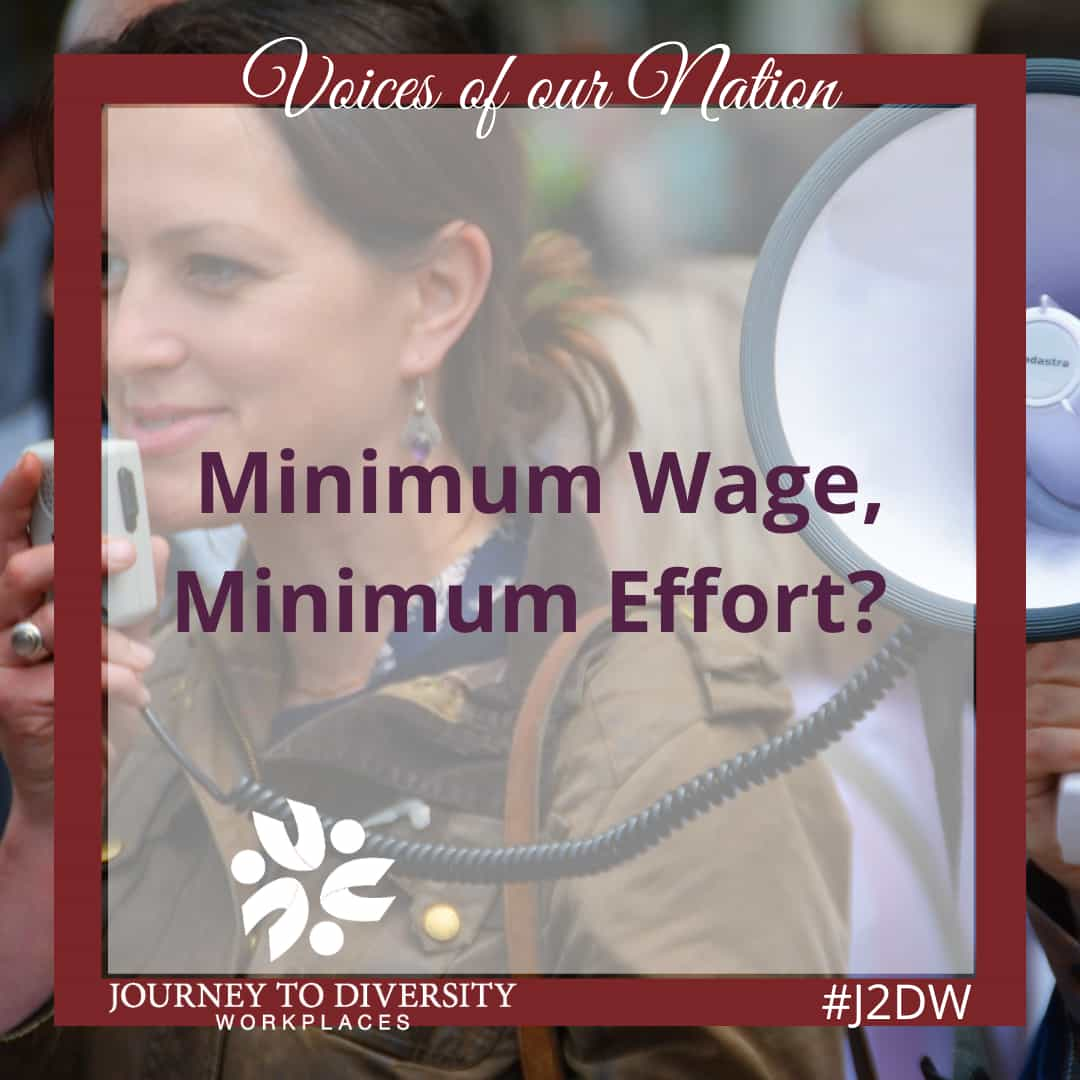From beginning to end, challenging the status quo is the incremental path of social and societal evolution. When dust settles and senses rest on something out of place, what starts as an individual musing grows into initiative for change. From one mind, or more likely, a hearty discussion of many: a framework erects and is bolted together by sound reasoning and good intentions for the future. At last, change finds its way to the hands of a doer; a creator.
There has been a traditional belief that to maximize profit, low skill labour must be paid the bare minimum. Within the last two decades a selection of large companies have made headlines by choosing to pay greater than minimum wage for their general labour and service needs. Much interest and discourse has been made of these progressive resource strategies and an examination of outcomes serves to educate on the wins that are being recorded for those capable and brave enough to raise the bar; those banking on the human factor.
Perhaps the most well-known example of this is Costco. Costco has ranked as the fourth largest retailer in the world, clearing over 100 billion dollars in sales in 2018. In 2019 Costco raised its minimum wage four times while also increasing wages for supervisors. At first it was $14, then $14.50, $15, and then $15.50. Employees receive two raises per year, and more than half of Costco’s employees make more than $25 an hour. CEO Craig Jelinek finds pride in Costco’s employee retention. On the benefits of paying more Craig said, “We feel the experience level and loyalty of our employees is a significant advantage for our company”. Happy experienced staff upsell more products, resolve complaints more efficiently, and get more done. Reducing employee turnover will also mean less spent on the expenses of hiring and training.
Costco is not the only company who has seen the light. Trader Joe’s, QuikTrip, Mercadona, The Gap, Starbucks, Wells Fargo, Walmart, Ikea, and even Mcdonalds have all implemented internal minimum wages. In a lot of cases these changes have produced positive results along key performance indicators, such as turnover and customer satisfaction. Gravity Payments, a company that handles credit and debit transactions, gave a 20 percent raise to all employees in 2012. What they recorded was a profit increase substantially greater than the expense of the wages.
The next year Gravity bumped wages up yet another 20 percent. Once again, profits shot up proportionately; productivity rates increased by a whopping 30 to 40 percent. It was also reported that “Gravity’s customer retention rate rose from 91 to 95 percent in the second quarter.” That increase of 4 percent in customer retention can be the same as cutting expenses by one fifth.
When Gravity Payments CEO Dan Price announced a three-year plan to phase in a minimum wage of $70,000 and that he would immediately reduce his salary from $1.1 million to $70,000 there were over 500 million mentions on social media; a video from NBC covering Gravity became the most shared within network history. This kind of good publicity makes a huge difference when it comes time for the customer to choose a service provider. Not only are they now aware of the company, but good actions build trust, and trust is everything when deciding on who to do business with.
Higher wages attract more applications and being able to select from a greater pool of applicants will offer opportunities for greater talent. In 2014 when The Gap announced they would raise their minimum wage in the United States to $9 an hour, there was a sharp increase in applications. The Global Head of HR at The Gap said, “almost immediately, we saw our applications increase by double digits”. After Gravity’s well-earned publicity, they reported receiving over 4500 new applications in the first week after the announcement they would phase in the $70,000 minimum wage.
When a company has enough cash flow and organizational structure in place, it certainly appears that providing a higher wage can result in improved customer and employee loyalty. Investing in front-line workers is now a well documented way to compete on service and motivate efficiency from employees and the hiring process. Should there be transparent systems for evaluating and rewarding performance in more workplaces? Leave a comment, tell us what you think! If you liked the article, share it with your friends and get a discussion going!
Sources
https://nrf.com/resources/top-retailers/top-100-retailers/top-100-retailers-2019
https://ca.finance.yahoo.com/news/why-costco-pays-its-180000-workers-way-more-than-the-minimum-wage-120358716.html
https://www.mashed.com/224884/heres-how-much-money-costco-employees-really-make/
https://www.investopedia.com/articles/markets-economy/081416/top-8-companies-raising-minimum-wage-mcd-sbux.asp
https://www.washingtonpost.com/news/wonk/wp/2015/03/31/higher-wages-boosted-gaps-applicant-pool-will-it-do-the-same-for-productivity/
Lamb, Charles W.; Hair, Joe F.; McDaniel, Carl; Boivin, Marc; Gaudet, David; Shearer, Janice.
(2019). Principles of Marketing.
This article was written by summer student Adam Best and edited by summer student Hannah Mastin. This article was funded by the Government of Canada.


